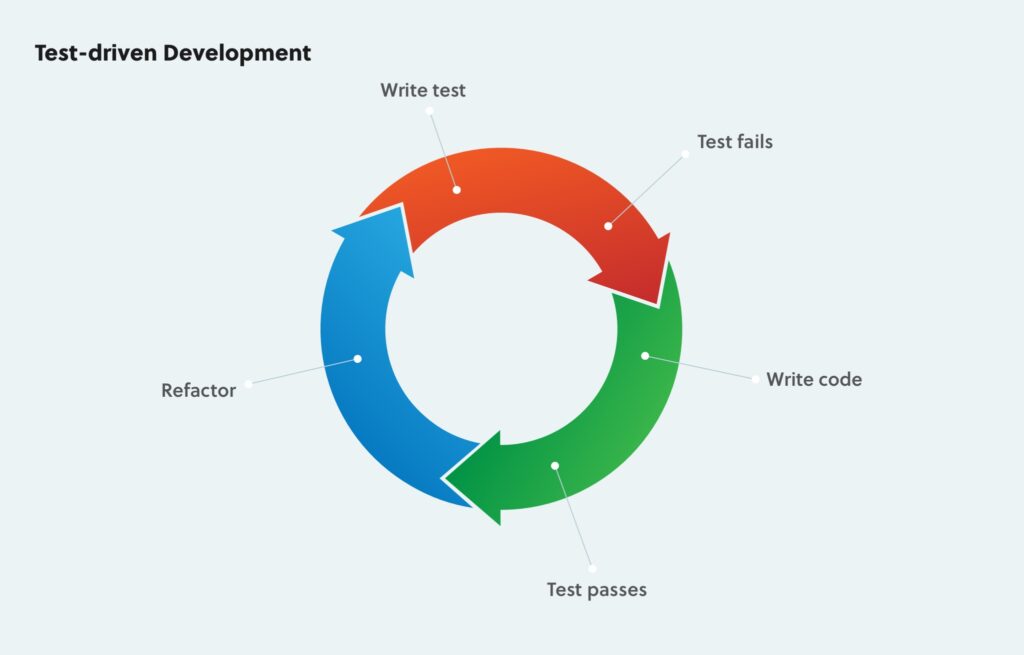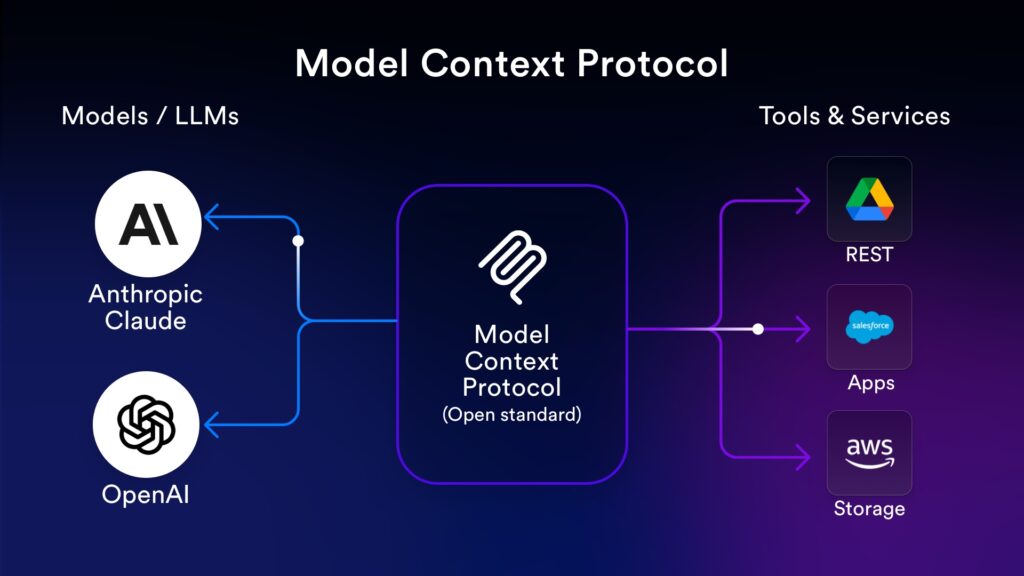Agile software development involves many iterative and collaborative practices to ensure you receive a valuable software solution. Test-driven development is one of those practices. Over the years, the Lightflows software engineering team have built many software products using this approach with great success. So, when we’re discussing the strategies of your software project, we might suggest a test-driven development approach – but what does it actually involve?
This blog explains everything you need to know about test-driven development, from its stages to its benefits for your business. We even share our best practices for test-driven development to expand on its benefits for you and your stakeholders.
What is test-driven development?
We sat down with Ben, our lead software engineer, to help explain what test-driven development entails and hear his thoughts on the approach.
“Test-driven development refers to writing tests before writing code to make the tests pass, rather than the other way around. This way, the tests represent the desired outcome of the final code. Test-driven development produces a fast feedback cycle where we define a requirement in code, then fulfil it by working code, and finally optimise it.
Depending on your requirements, we might decide to carry out test-driven development during the software development process of your product. Test-driven development is beneficial for ensuring that your software will work as expected, preventing any potential issues from arising later. We offer test-driven development as part of our software development services, and our partners have seen many benefits from taking such an approach with their software products.”

What are the stages of test-driven development?
The process of creating failing test cases and refactoring them until they pass is known as the red-green-refactor cycle. Our software engineers follow this cycle to ensure that each functionality has undergone at least one test, better guaranteeing that your software is working as expected.
Each stage of the red-green-refactor cycle is as follows:
- Red. The red stage refers to creating a test to verify a requirement that hasn’t yet been implemented. As such, software engineers don’t consider any failure a bug or defect at this stage. The unit testing framework displays a red bar when tests fail, hence ‘the red stage’.
- Green. The green stage consists of writing the minimum amount of code required to make the test pass. Generally, the simpler we can keep the code at this stage, the better. And, you guessed it – the unit testing framework displays a green bar when tests pass during the green stage.
- Refactor. The refactor stage involves improving the code from the green stage’s quality without changing the code’s behaviour. This involves removing any duplicate code, enhancing readability and checking overall performance. At the end of this stage, the existing test cases should still pass to ensure the code’s functionality hasn’t broken.
Our software engineers will complete this cycle as many times as necessary to ensure each functionality of your software works as it should.
Why use test-driven development?
Test-driven development is an iterative approach to software development that ensures your software’s code is simple and bug-free. The simpler your code, the easier it is for us to maintain or change as your business requirements change. And, the more bug-free, the better – for all your stakeholders!
The test-driven approach goes hand in hand with our agile approach to the entire software development process. An agile approach means we provide regular feedback on your software’s progress. So, after testing certain functionalities, we can let you know which ones look promising and which might need rethinking.
Why is test-driven development important?
Test-driven development is essential for identifying any issues that could occur before we proceed with your software development. Identifying these issues early on means they’re much less likely to occur later, preventing delays in the software development process.
Best practices
When asked to explain the approach, Ben shared his best practices for creating robust software through test-driven development.
Keeping tests focused
“Each unit test will verify a component of the larger feature, making it easier to locate any defects. For example, 3 unit tests covering around 30 lines of code each will tell us more than 1 unit test covering 100 lines. This iterative approach ensures the robustness of your software in the long run.”
Running the whole test suite
“While we work, we’ll run the whole test suite – not just the newest test – to ensure continued stability as we add features.”
Setting up a pipeline to run the test suite automatically
“This practice hedges against issues like configuration drift, where a developer’s environment might differ from the staging or production environments for your project. Notifications of pipeline failures keep the development team aware of problems that need immediate attention.”

Benefits of test-driven development
Test-driven development has many benefits compared to testing your software after our software engineers have written all the code. The most obvious one is – as we mentioned – identifying issues earlier rather than later, ensuring a high-quality, bug-free product that saves you time and money.
The main benefits of test-driven development for your business include:
Your software product will be more reliable
Test-driven development is a great way to ensure that your software addresses your requirements from the earliest stages of development, creating a more thorough product flow. A reliable, easy-to-use product will give your customers a better user experience, increasing customer satisfaction and retention.
Your software product will be more robust
Test-driven development guarantees a more robust product in our first delivery round, allowing us to address any bugs more quickly than if we wrote the code all at once. Bugs harm your product’s reliability, meaning you could lose more customers than gain them. The more robust your product, the more reliable it’ll be – and the more your customers will use and recommend it.
You’ll receive many cost-saving benefits
The ability to address any bugs – should they arise during the software development process – reduces the chance of them occurring once you receive your product. Addressing these issues as early as possible will save you costs in the long run.
You’ll receive better long-term maintenance
Test-driven development makes it easier for our software engineers to refer back to any part of the code for alterations. So, we can quickly change that functionality if you require any changes to your software once you’ve received it or aren’t as satisfied with a specific functionality as you’d hoped.
You have room for future flexibility
The test-driven approach allows our software engineers to easily add new features to your product as your business needs expand and change, so you don’t need to invest in an entirely new product or wait a long time.
Summary
Test-driven development effectively ensures your software will work as you and your customers expect. Through its iterative nature, we can identify issues early on, helping get your software to market sooner. Likewise, test-driven development guarantees that we can meet your business requirements, deliver a robust product and offer better long-term maintenance.
Once we’ve discussed your software requirements, we’ll let you know whether we think test-driven development is necessary for your software development product. If so, we’ll further break down everything in this blog, so you know how it’ll benefit your stakeholders.
To get in touch to discuss your software needs, don’t hesitate to contact us here.
Table of contents



